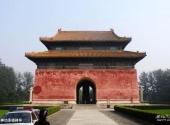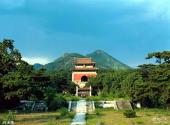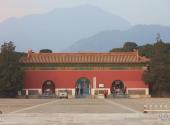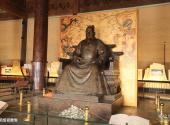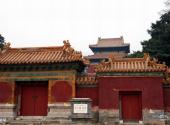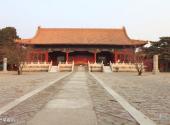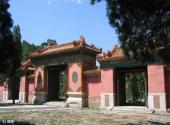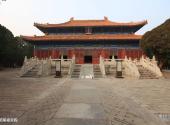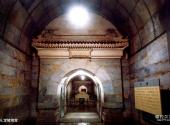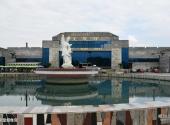
Scenic spot introduction:
The Ming Tombs are a group of tombs of the emperors of the Ming Dynasty in China. They are located on Tianshou Mountain at the foot of the Yanshan Mountains in Changping District, Beijing. Construction began in May of the seventh year of the Yongle reign (1409). Changling , until the last emperor of the Ming Dynasty, Chongzhen, was buried Si Ling During the 230 years or so, 13 emperors' tombs, seven concubines' tombs and one eunuch's tomb were built here. The buildings are large-scale, complete in system and relatively well preserved. They are outstanding representatives of ancient Chinese imperial tombs and have extremely high historical and cultural value.Attractions distribution:
The Ming Tombs are a group of mausoleums for the 13 emperors of the Ming Dynasty (1368-1644), covering an area of about 120 square kilometers. The Yanshan Mountains form a natural barrier to the northwest of the tomb group, and the small basins surrounded by the mountains are lush with trees. Mausoleum buildings with red walls and yellow tiles are located on the foothills on the east, west and north sides. The Chengzu Mausoleum is located in the middle of the north side, and the other tombs are located on the left and right. The overall layout is solemn and harmonious, with clear distinctions between hosts and guests, and a solemn and elegant atmosphere.The Ming Tombs complex Changling of Shinto As total Shinto , its memorial archway, Stone statue All of them are used by the mausoleums. Changling The Ming mausoleum system is different from the ancient system in that the front courtyard is square and the back treasure city is round. Ming Building The halls of worship are arranged along a central axis, and all the mausoleums follow this regulation, but the scale and degree of luxury are different. Among them, the Chang, Yong and Ding mausoleums were built by the tomb owners themselves. Due to their long reigns, in order to show the great power of the emperor, their mausoleums are all grand and magnificent with luxurious decorations. The other mausoleums were built by the successors of the tomb owners. Affected by national strength and other factors, their scales are slightly smaller. There are currently four scenic spots officially open to the public in the scenic area: Dingling , Changling , Zhaoling Mausoleum , Shinto .
Scenic spot qualifications:
National 5A scenic spot, world cultural heritageScenic spot features:
Tombs, historic sites, Ming Dynasty history, ancient buildings, cultural relics, classical architecture, stone carving artScenic spot map:
Scenic spot map
Attraction Address
Travel Guide
Travel Notes of Travellers:
- Travel Guide: Beijing Three-Day Travel Guide 2017
Best time to visit:
Spring, Summer and Autumn
Scenic spot map:
Scenic spot map
Tourist Transportation
Scenic spot location:
China > Beijing > Changping District
How to get there:
Bus routes: Changping No. 22 and No. 23 Shenlu, Dingling , Zhaoling Mausoleum ; Route 314 goes directly to Dingling , Zhaoling Mausoleum ;
Scenic area map:
Click to expand the scenic area map
Attraction Tickets
Ticket prices for Ming Tombs:
Shenlu: 25 yuan in off-season, 35 yuan in peak season;
Zhaoling Mausoleum : 25 yuan in off-season, 35 yuan in peak season;
Dingling : 45 yuan in off-season, 65 yuan in peak season;
Changling : 35 yuan in off-season, 50 yuan in peak season;
(The low season is from November 1st of the current year to March 31st of the following year; the peak season is from April 1st to October 31st of each year.)
Scenic area opening hours:
Peak season: 8:00-17:30; Off-season: 8:30-17:00


